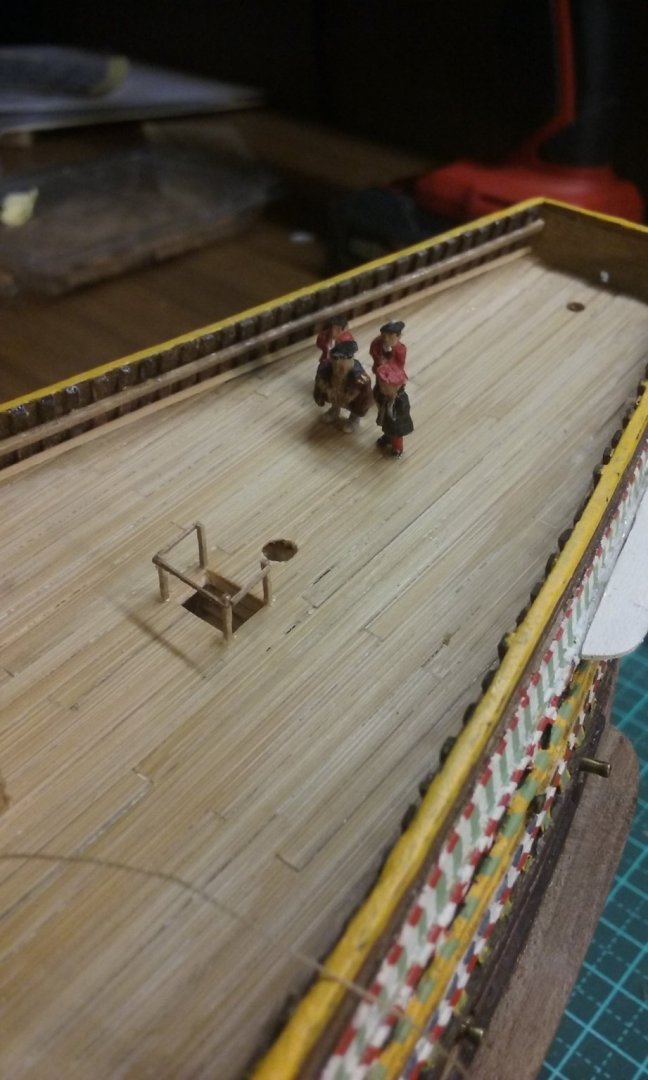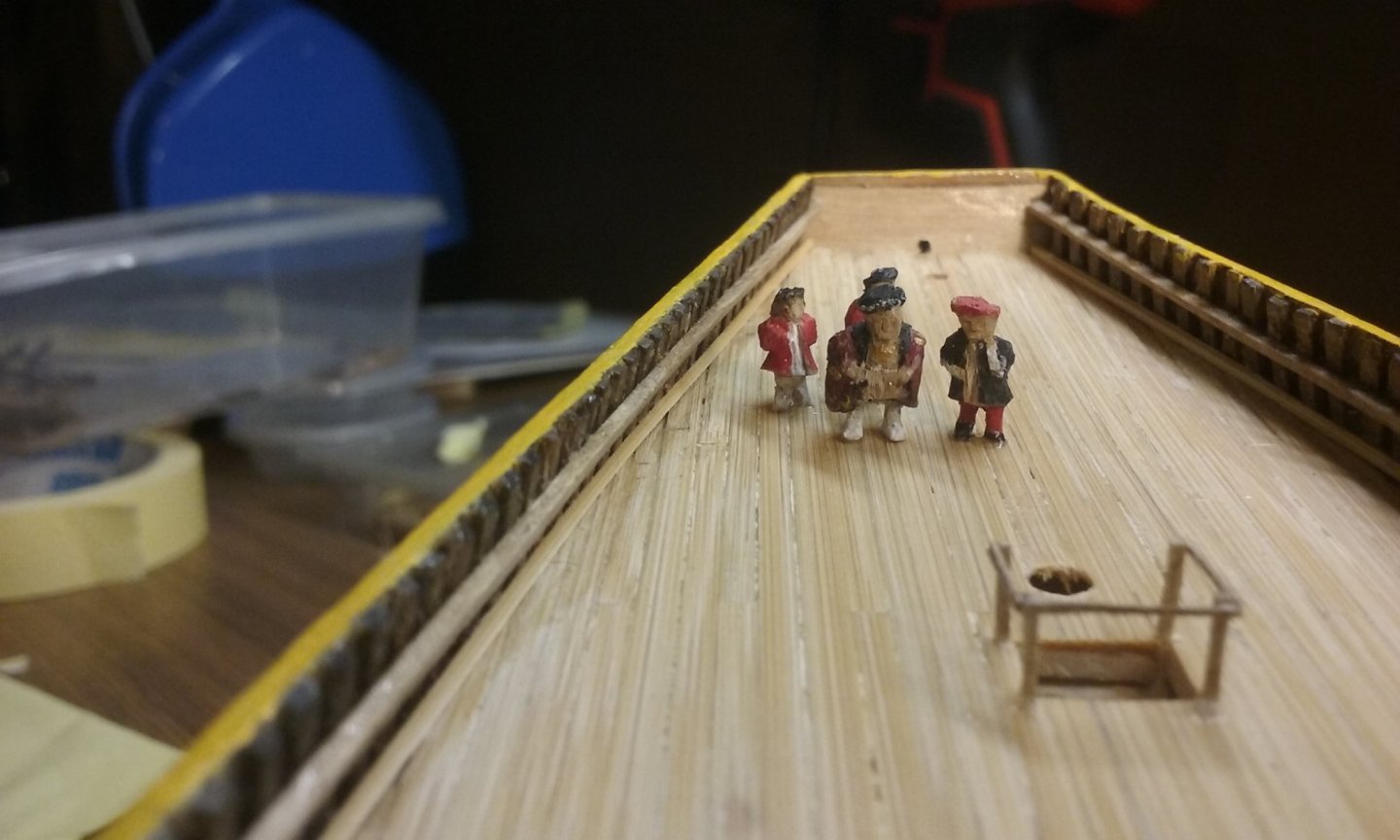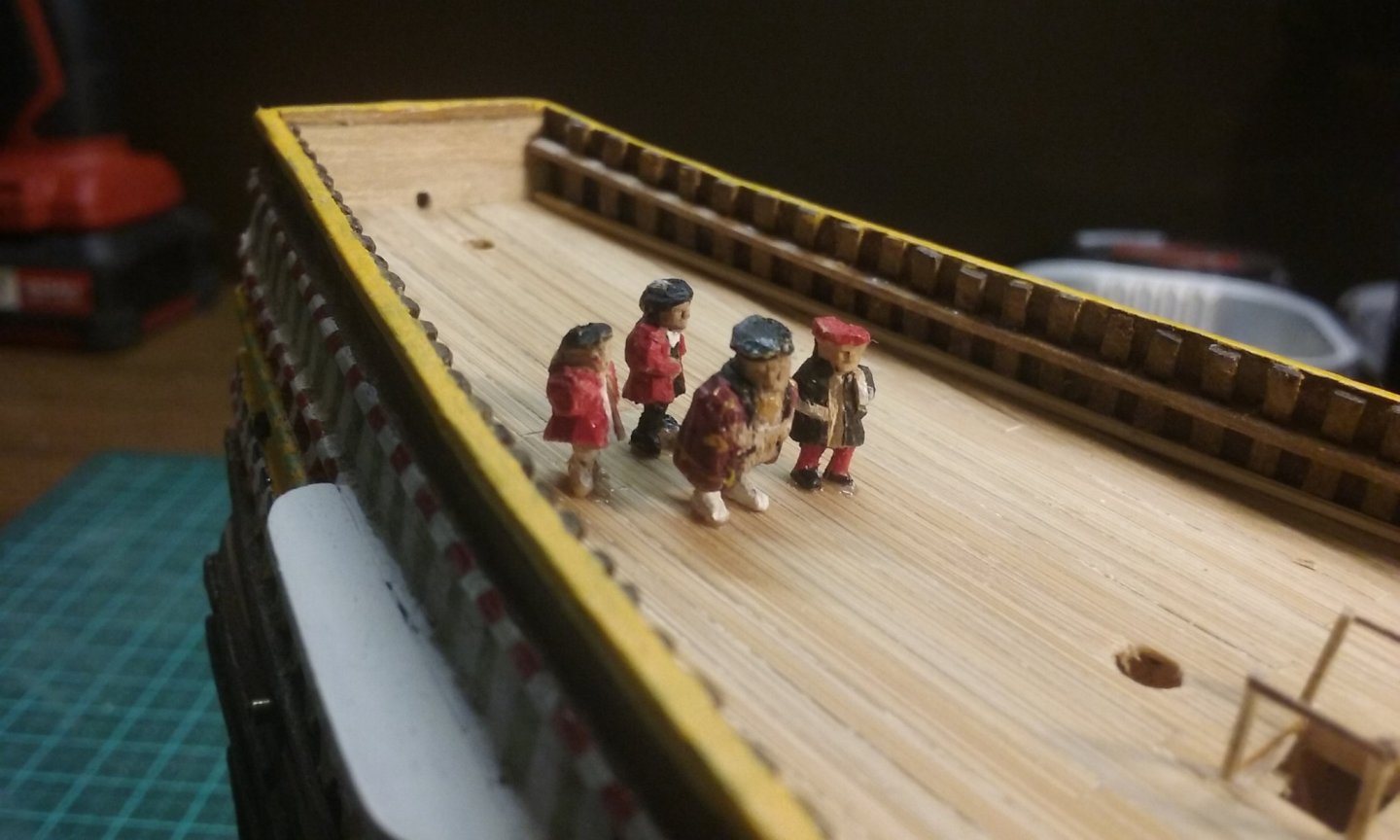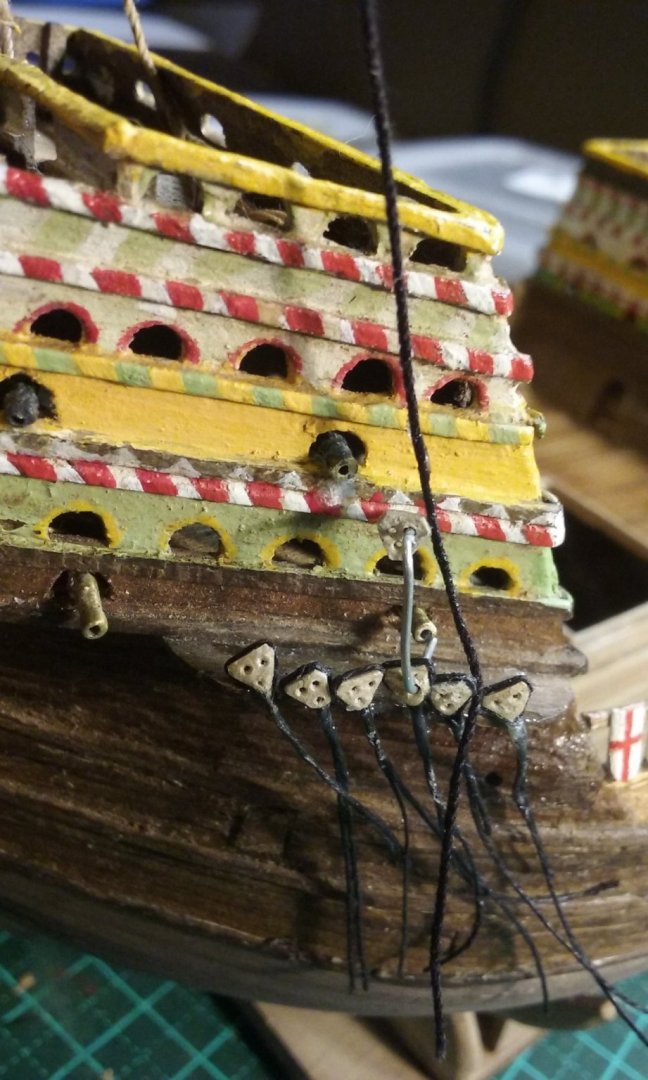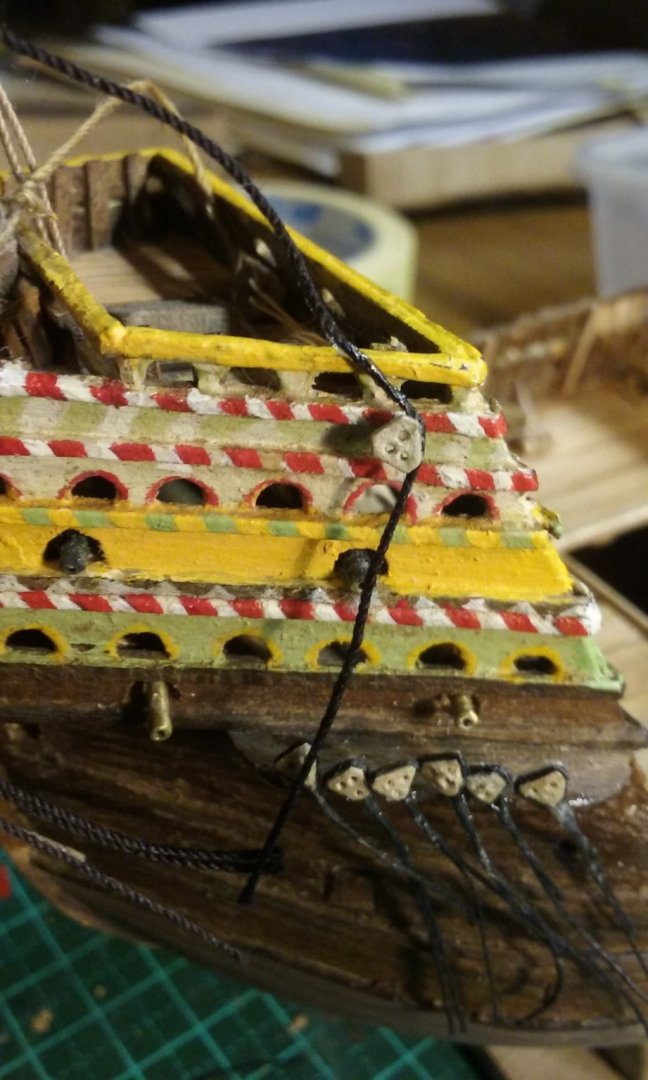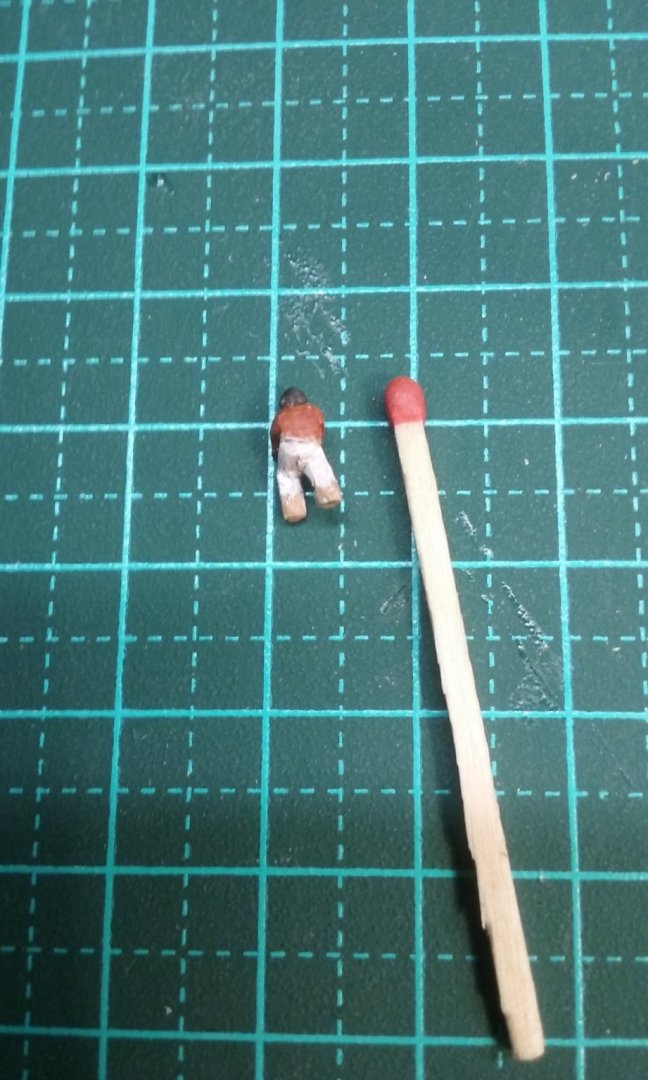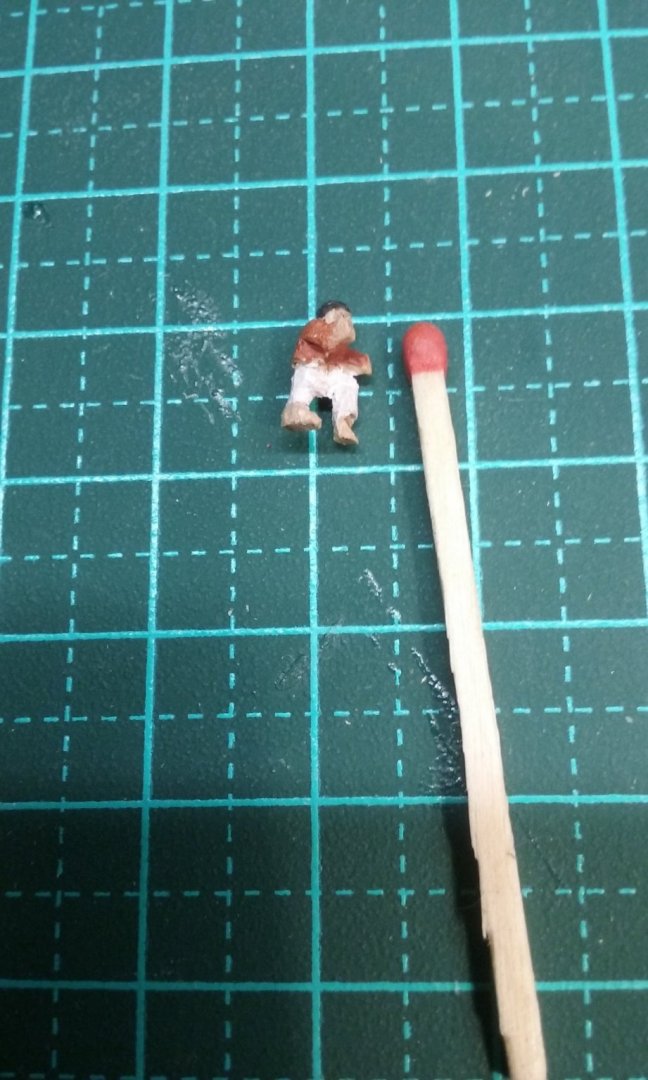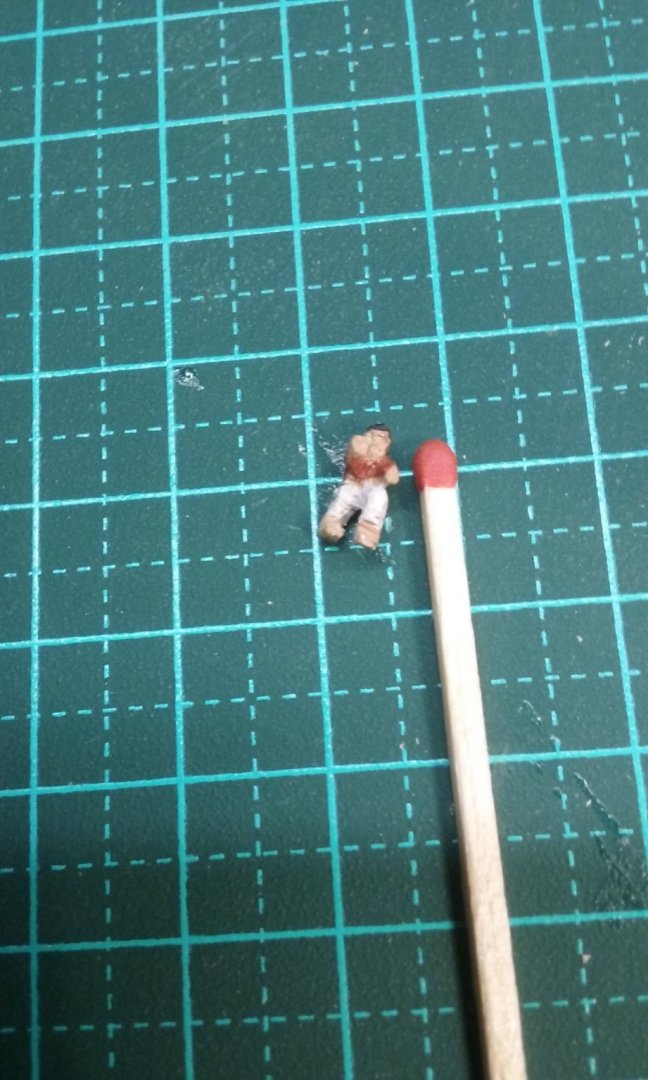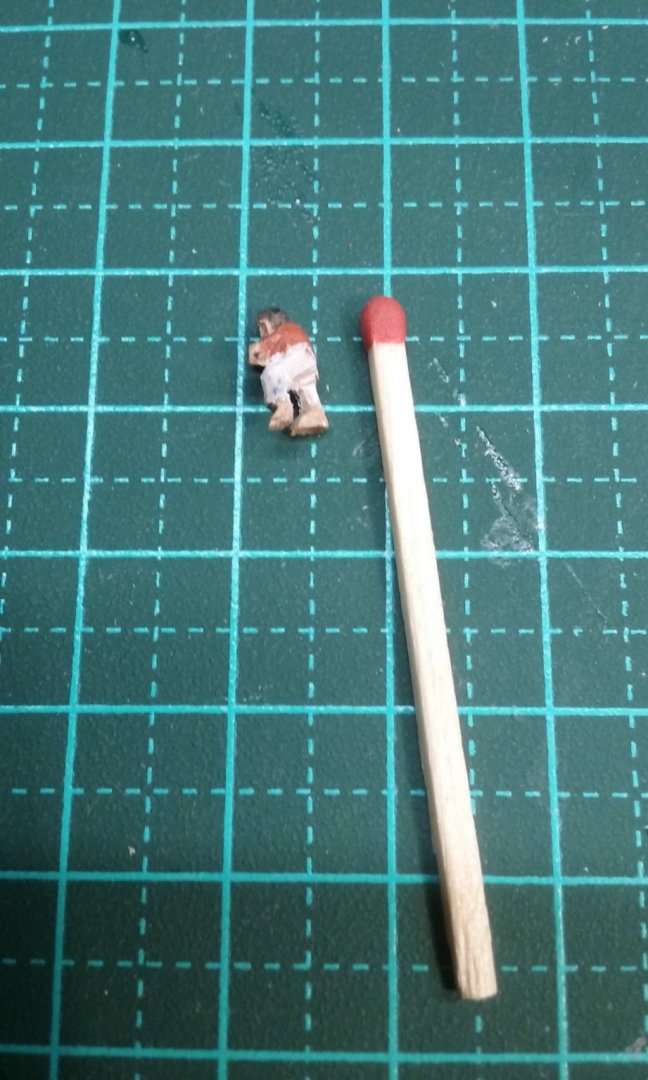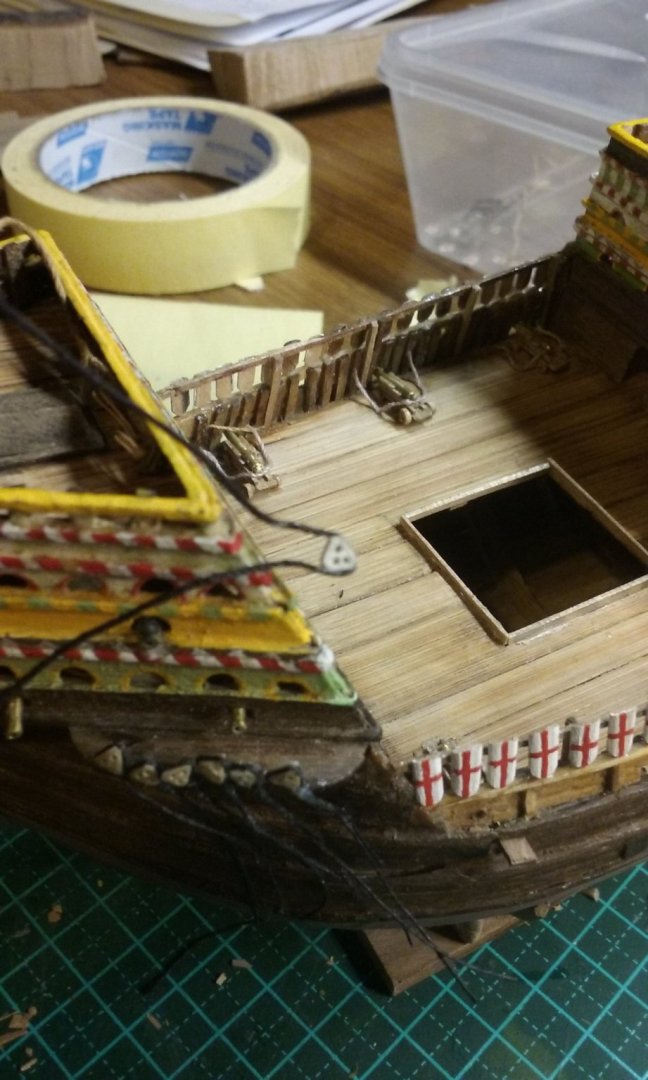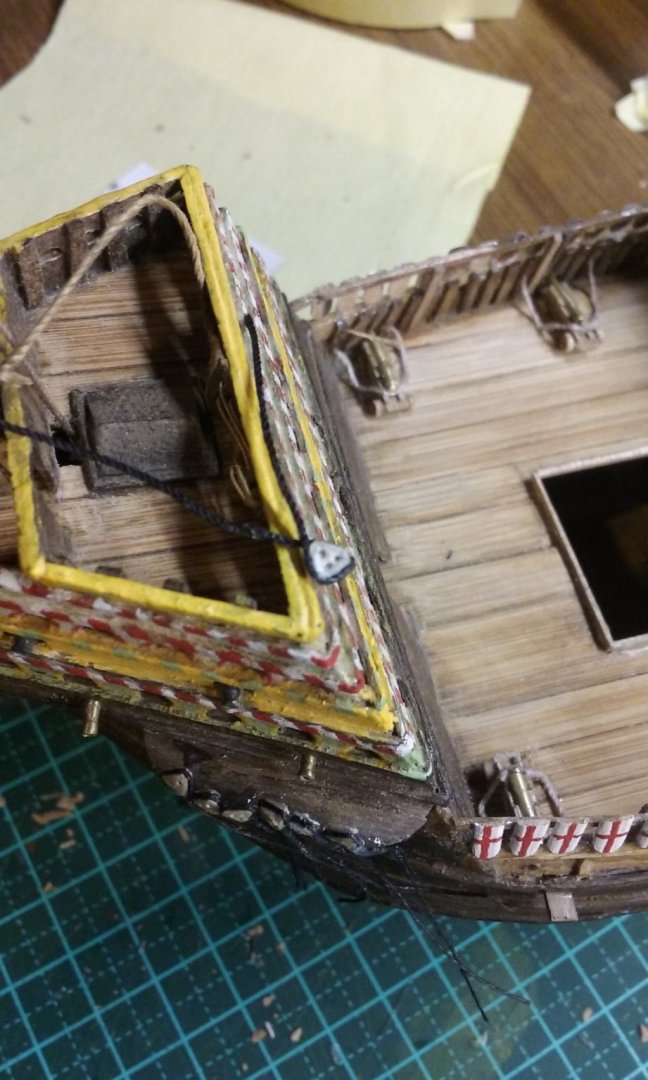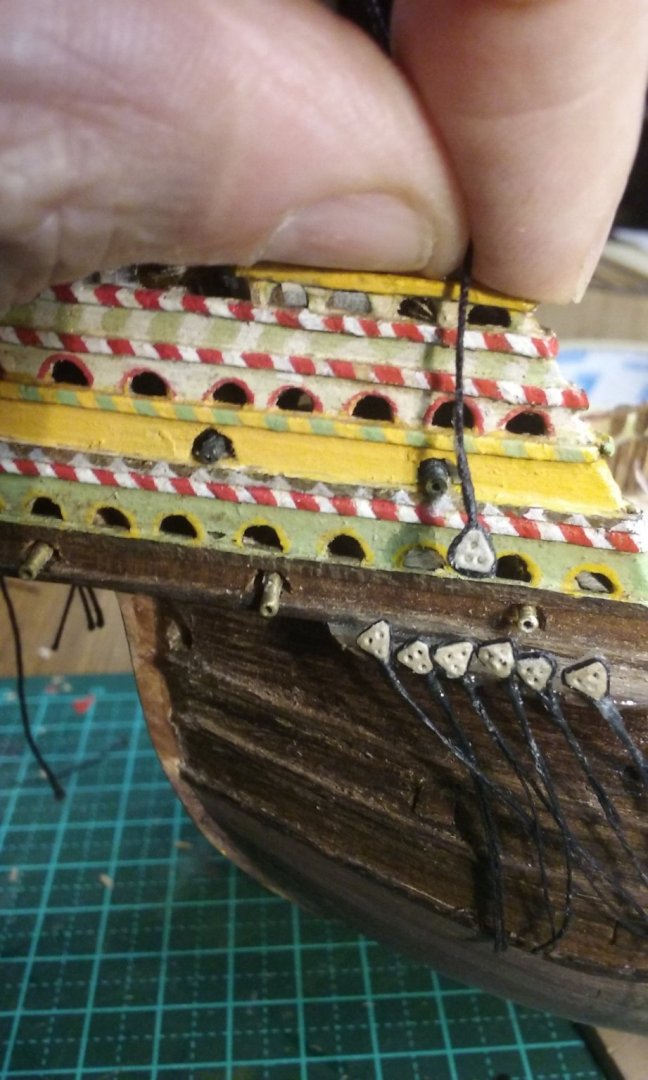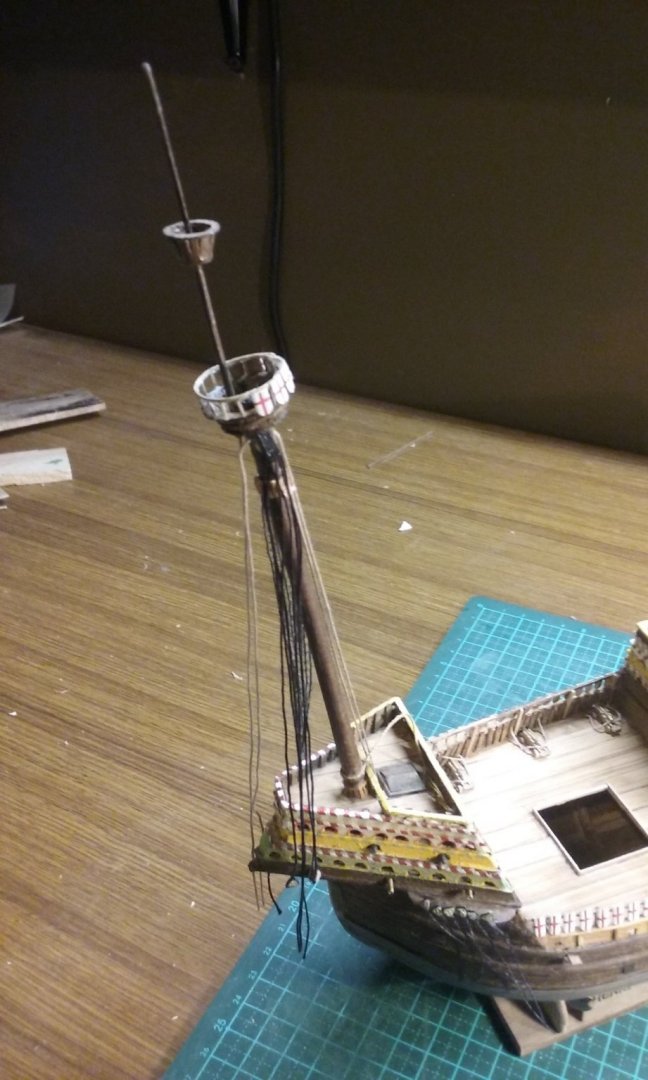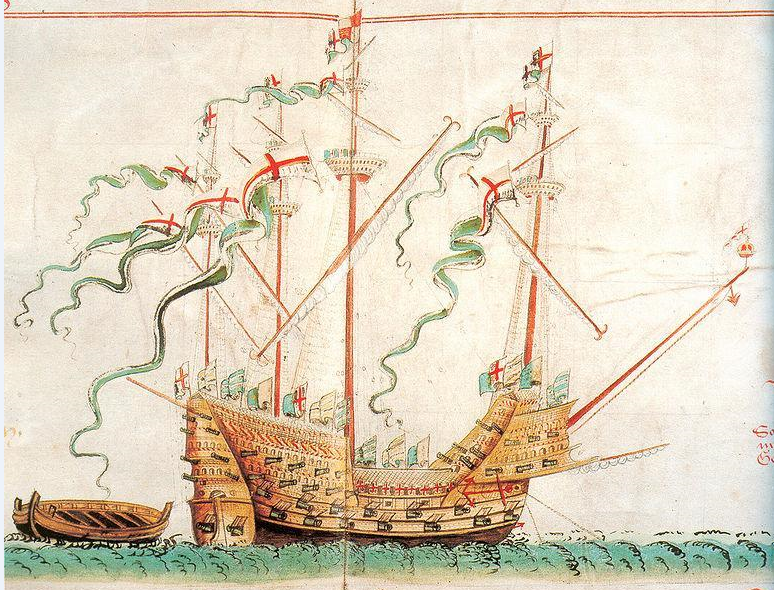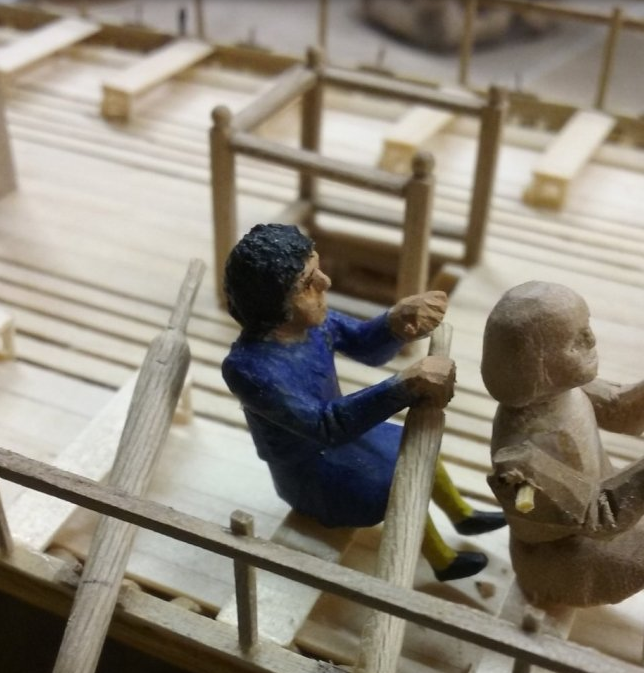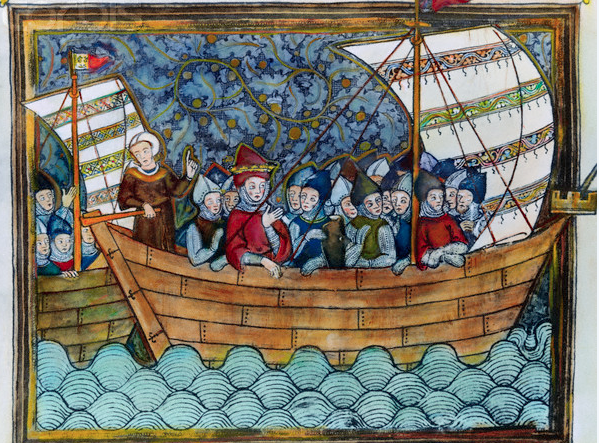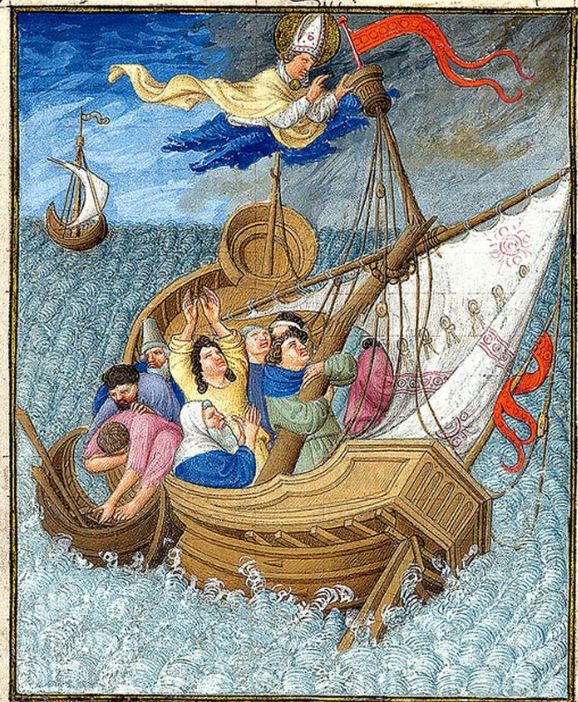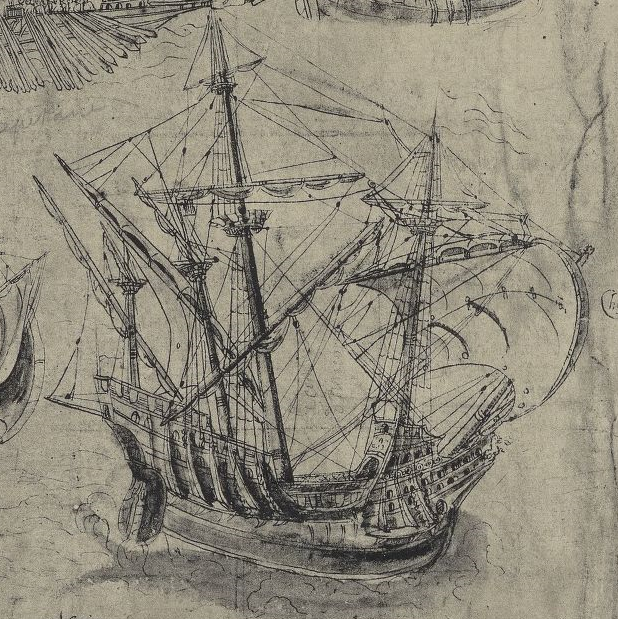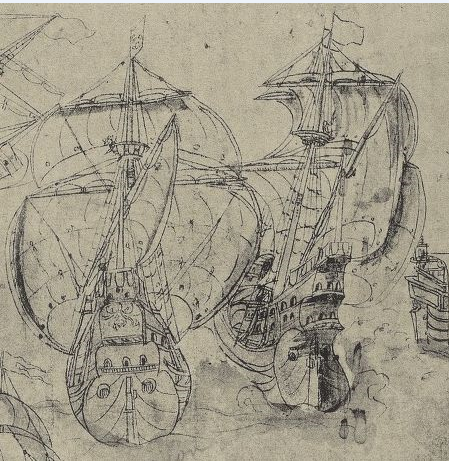-
Posts
7,986 -
Joined
-
Last visited
Content Type
Profiles
Forums
Gallery
Events
Everything posted by Louie da fly
-

What sails did a ship like Vasa have set in severe weather?
Louie da fly replied to ubjs's topic in Nautical/Naval History
Yes - interesting question comes up here - what did they do in the Vasa's time, before staysails came into use? Steven -

Coca by Foremast - Amati -1:60
Louie da fly replied to Foremast's topic in - Kit subjects built Up to and including 1500 AD
Glad to be of service. The Lomellina, because she ended up on her side, has had quite a bit of the upper structure preserved. My post #13 in the link above shows it. The documentation is very comprehensive and well worth a read all the way through. I did an English translation of the main report - any mistakes are my own . . . I can send it to you if you like (I was going to attach it but it's 16Mb). Send me a PM if you're interested. Steven -

Coca by Foremast - Amati -1:60
Louie da fly replied to Foremast's topic in - Kit subjects built Up to and including 1500 AD
You might this useful - The Lomellina (probably built around 1503) had a capstan and a knight for the halyard, both of which have been recovered, and her approximate proportions have been figured out. However, she was probably a considerably larger vessel than the one the"Coca" is based on. Steven -
My understanding is that the capstan was used to hoist the yard. I love the advertising for Bjorn's Used Cogs .
- 130 replies
-
- wütender hund
- hanseatic
-
(and 2 more)
Tagged with:
-
You're a bad, cruel man, Druxey . In fact I'm looking at painting the "cloth of gold" decoration on the sails - just chickening out at the moment. This is another thing that I didn't do back in the day when I first built the model, and I'm not looking forward to it . . .
- 740 replies
-
- Tudor
- restoration
-
(and 4 more)
Tagged with:
-
Thanks everybody for all the likes. Much appreciated. It's going a bit slowly at the moment because I'm doing these deadeyes and they take a fair bit of time with the technique I'm using - and I want to make sure that each one is finished and the glue dried before I start on the next, so I don't stuff up the previous one. I've pretty much used up most of the "in the meantime" projects I can get on with while I'm waiting for glue to dry so I spend a fair bit of time sitting on my hands. Balclutha, I used a No. 11 scalpel or craft knife, but that's because those frames are made of balsa. If the timber had been anything more substantial I'd have used a saw. Steven
- 740 replies
-
- Tudor
- restoration
-
(and 4 more)
Tagged with:
-
Yes indeed. He was pretty much Europe's "golden boy" in his youth. He seems to have gone sharply downhill physically and mentally after a very severe jousting accident in which his leg (thigh, I think) was very badly injured and never really recovered from it. Steven
- 740 replies
-
- Tudor
- restoration
-
(and 4 more)
Tagged with:
-
He was a big guy (over 6 feet), and solidly built, but he wasn't really all that fat until the end of his life. But the fashions of the time emphasised bodily "bulk". I've seen his armour from various times of his life, and it wasn't all that tubby. Steven
- 740 replies
-
- Tudor
- restoration
-
(and 4 more)
Tagged with:
-
Henry looked a bit lonely so I've added a couple more figures. I also moved him from the weather deck to the (quarter?)deck where he's a bit more obvious, and I think more in keeping with his station in the Grand Scheme of Things. Also another sailor - he'll be climbing the ratlines (when I get them in place). And I thought I'd show the process I use to put deadeyes on. I've made a little jig to standardise the spacing of the deadeyes - copied from other people's builds. (I should have made it earlier - the earlier deadeyes might end up a bit higgledy-piggledy because of that.) First put the wire jig through the extreme holes in the corresponding upper and lower deadeyes. Note this doesn't work as well on mine because I have tiny triangular deadeyes which rotate when you try to pin them down, so I just use a dab of glue to fix the shroud to the top of the triangle. Then gradually wrap the shroud around the deadeye, gluing as I go. Trim the shroud to length and "feather" the end to get it to merge into the rest of the shroud like a splice. And voila! Oh, and I've (possibly too early - I hope I don't break it) added the fore topmast. It struck me how tiny this topmast is - then I noticed that though Landström's reconstruction has topgallant sails, it doesn't have a topgallant mast! Looking at the Anthony Roll picture, it gets even worse - he's drawn it as though the mast is a single unit, all the way from the deck up to the truck! As topgallants were very new at this time, and contemporary pictures show topmasts as being pretty tiny, I'm going with Landström. Maybe they hadn't yet developed the idea of a separate piece of mast for each sail, at least up to the topgallants. Steven
- 740 replies
-
- Tudor
- restoration
-
(and 4 more)
Tagged with:
-
Very nice work, Cathead - and very fast work. By the way, I forgot to mention spears - the most common weapon at the time. You should take them into account. And shields - and from personal experience flat round shields with bosses do not "stack" - they have minds of their own - as you already know. Oh, and blue dye was fairly common. They used woad - it produces a colour very much like what your figures are wearing. Steven
-
Reef-points are shown on sails in 14th century representations and even into the early 15th century --but they seem to have "got lost" in between times. Cog, 1st half of 14th century - Bettman archive 'Saint Nicholas Saves Travelers at Sea' from The Belles Heures of Jean de France illustrated by the Limbourg brothers 1405-1409 It is very unusual (and probably unlikely) for a ship of this period to have reef-points rather than bonnets. I have a single contemporary source showing galleons with reef-points from 1545. All the rest show bonnets. 1545 Map of Normandy - Jean Jolivet By about the end of the 17th century ships were using them again. It's quite likely the kit manufacturer just got it wrong. But it comes down to whether you prefer to follow the kit instructions or to change to bonnets. It's your model and you can do what you want with it. But it's looking really good. Steven
- 135 replies
-
- billing boats
- half moon
-
(and 1 more)
Tagged with:
-
Just subscribed.I wish it every success. But where's the podcast? Steven
-
Oh, I forgot to mention - when i was young my twin obsessions were Nelson and heraldry, so I became familiar with Nelson's coat of arms, granted to him after the Battle of the Nile - not [edit - Oops! Should be NOTE] the ships and, on the diagonal line on the shield, the mortar bombs. In 2000 I was in the UK and visited Westminster Abbey and there was a row of tiny coats of arms of important people along the walls. I said to my wife "Look, there's Lord Nelson's coat of Arms" and a woman who was one of the official guides heard me and said - "Oh, that's it, is it? I'd been told it was here but I didn't know which one it was." Score one for the home team . Steven
-
Cathead, I suppose it's possible it's not a barrel, but it seems the most likely thing. A rolled up carpet wouldn't be heavy enough to need its own cart. And yes, buckets with (willow) hoops have been found, so the technology existed. BTW, a wooden tent frame was also found on the Gokstad ship. Reconstruction below. I'm pretty sure the fabric had disappeared. Steven
-
Beautiful execution as always. But I can't get over the look of that planking. Curiouser and curiouser Steven
- 186 replies
-
- keelless
- reverse clinker
- (and 4 more)
-
Looking good, Chuck. You'd never know there'd been a problem. Good save. Steven
- 130 replies
-
- wütender hund
- hanseatic
-
(and 2 more)
Tagged with:
-
Nobody knows for sure what was carried on yer average Viking ship, but there is a representation of a large barrel on the Bayeux Tapestry (late 11th century - not Viking, but Norman/Anglo-Saxon) at - note also the man on the far right is carrying a shapeless bundle over his shoulder. I don't think there's any proof that oilcloth was used, but it seems likely. It's likely a ship would have carried a large cauldron to cook up food for the crew when on land, and a tripod to support the cauldron. These photos are of actual artefacts. and http://warehamforgeblog.blogspot.com/2010/11/forging-norse-cook-pot.html Several wooden chests have been found. The Mastermyr chest was full of blacksmith's tools and wasn't terribly big (the dimensions are in millimetres) . https://www.angelfire.com/wy/svenskildbiter/Viking/vikchest.html There is also the Oseberg chest which contained fruit and wheat - https://www.historicallocks.com/en/site/h/safes/mastermyr-and-oseberg/description-of-the-chest-and-lock/ The size of the other can be estimated by comparison with their surroundings - http://www.europa.org.au/index.php/projects/28-projects-lejrechest and http://viking.archeurope.info/index.php?page=oseberg-15 I would say weapons would be wrapped, probably in bundles, against the salt spray, and though there's no proof, I expect oilcloth, or perhaps oiled leather would have been used. Steven
-

What plastic ship kits have you done?
Louie da fly replied to Broadsides's topic in Plastic model kits
I made the tiny Airfix Shannon, Golden Hind, Victory, and once the big Airfix Victory and the Revell Victory. Oh, and the Airfix Vasa - I'd forgotten that one. Plus even tinier Airfix models of the Graf Spee, Exeter, Achilles and Ajax from the battle of the River Plate. All gone the way of all flesh . . . Steven -
Wonderful work, Steven. She's a beauty. Would I be offending you if I said she looks very steampunk? BTW, given the apparent size of the model, you could possibly have got away with thinner metal than 16ga, which is fairly difficult to form. But I have to say you've done a beautiful job of it. Steven
-
You've done a magnificent job with her, Clare. Truly a model to be proud of. (And yes, I'd have sworn she was wood.) Steven
- 175 replies
-
- hanse kogge
- shipyard
-
(and 1 more)
Tagged with:
About us
Modelshipworld - Advancing Ship Modeling through Research
SSL Secured
Your security is important for us so this Website is SSL-Secured
NRG Mailing Address
Nautical Research Guild
237 South Lincoln Street
Westmont IL, 60559-1917
Model Ship World ® and the MSW logo are Registered Trademarks, and belong to the Nautical Research Guild (United States Patent and Trademark Office: No. 6,929,264 & No. 6,929,274, registered Dec. 20, 2022)
Helpful Links
About the NRG
If you enjoy building ship models that are historically accurate as well as beautiful, then The Nautical Research Guild (NRG) is just right for you.
The Guild is a non-profit educational organization whose mission is to “Advance Ship Modeling Through Research”. We provide support to our members in their efforts to raise the quality of their model ships.
The Nautical Research Guild has published our world-renowned quarterly magazine, The Nautical Research Journal, since 1955. The pages of the Journal are full of articles by accomplished ship modelers who show you how they create those exquisite details on their models, and by maritime historians who show you the correct details to build. The Journal is available in both print and digital editions. Go to the NRG web site (www.thenrg.org) to download a complimentary digital copy of the Journal. The NRG also publishes plan sets, books and compilations of back issues of the Journal and the former Ships in Scale and Model Ship Builder magazines.




